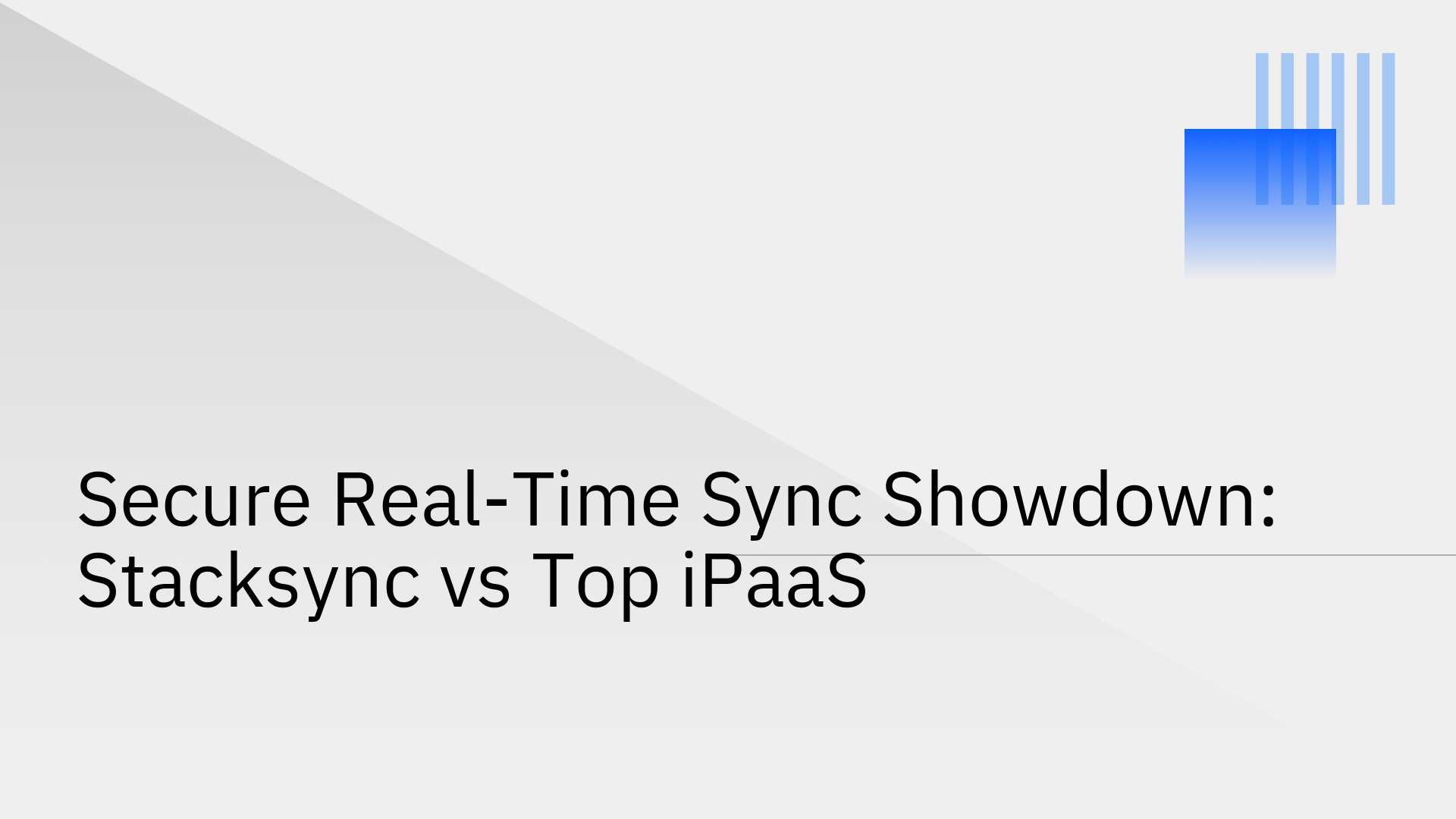
In today's fast-paced digital landscape, business data is generated and stored across a sprawling ecosystem of applications. From CRMs and ERPs to custom databases, this decentralization creates a significant operational challenge: ensuring data is consistent, accurate, and up-to-date everywhere, all the time. Failure to do so results in data silos, costly operational inefficiencies, and poor customer experiences.
To solve this, businesses typically turn to two types of solutions: generalist Integration Platform as a Service (iPaaS) tools or specialized, real-time sync platforms. This article provides a definitive data synchronization tools comparison to help you choose the right tool for your mission-critical needs.
Real-time data synchronization is the process of instantaneously propagating data changes across multiple independent systems, ensuring consistency in milliseconds, not minutes or hours. This is critical for mission-critical operations where data latency directly impacts business outcomes, such as:
Stacksync is a no-code tool engineered specifically for this purpose, enabling real-time, bidirectional data synchronization between enterprise systems like CRMs and databases [1].
Integration Platform as a Service (iPaaS) is a suite of cloud services that enables the development, execution, and governance of integration flows connecting various applications. These platforms are often marketed as "jack-of-all-trades" tools, effective for building simple, one-way workflow automations based on "if this, then that" logic.
However, their generalist nature reveals a critical limitation for operational use cases: many iPaaS solutions rely on scheduled triggers or batch processing. This means data syncs can be delayed by several minutes or even hours, creating a lag that is unacceptable for real-time operational needs. While useful for non-urgent tasks, they are not the best iPaaS and data integration tools for operational efficiency when live data is essential.
In contrast, Stacksync is a specialized platform engineered from the ground up for real-time, two-way data synchronization at scale. Its core purpose is to eliminate the immense complexity of API plumbing and establish a reliable single source of truth across all your business systems.
The platform’s architecture is built for speed and reliability, reducing traditional CRM integration project timelines and budget by 90% [2]. Unlike generalist tools that require extensive custom configuration for complex scenarios, Stacksync is designed to handle the nuances of bidirectional sync, conflict resolution, and data mapping without requiring a single line of code [7].
To clarify the distinction, this table provides a direct comparison between Stacksync's dedicated approach and that of traditional iPaaS solutions.
Stacksync: Provides true real-time synchronization with sub-second latency. It is architected for mission-critical use cases where any delay leads to operational friction and missed opportunities.
Traditional iPaaS: Often operates on polling schedules, checking for new data every 5, 10, or 15 minutes. This inherent latency is a fundamental drawback for any workflow that relies on immediate data availability.
Stacksync: Excels at reliable, out-of-the-box bidirectional sync. It automatically handles complex data mapping, transformation, and conflict resolution to ensure data integrity across systems.
Traditional iPaaS: Achieving two-way sync is often a complex and brittle workaround. It typically requires building and maintaining two separate one-way flows, a process that is prone to creating infinite sync loops and data corruption. This is a key differentiator when comparing Stacksync to trigger-based tools like Zapier.
Stacksync: Engineered to scale confidently to millions of records. It features a dedicated Sync Issue Management dashboard that prevents silent failures and allows engineers to monitor, debug, and resolve issues with a single click. Smart API Rate Limit handling prevents hitting service quotas, ensuring uninterrupted performance.
Traditional iPaaS: Reliability often degrades as workflow complexity and data volume increase. Error handling is typically generic, providing vague logs that make troubleshooting sync-specific problems a time-consuming and frustrating task for engineering teams.
Stacksync: Security is a core pillar of the platform, not an afterthought. It is built with enterprise-grade security and compliance, holding certifications like SOC 2 Type II, GDPR, and HIPAA BAA. Secure connection methods, including OAuth 2.0 and SSH Tunneling, are standard.
Traditional iPaaS: Security standards vary widely between providers. Many do not offer the granular controls or auditable compliance required by enterprises handling sensitive customer or financial data, posing a significant risk.
Leading data-driven companies trust Stacksync for their most critical integrations. Businesses like Nautilus Solar, Acertus, Gladia, and LHT Terminals rely on Stacksync to sync data across platforms like Salesforce, NetSuite, HubSpot, and a wide array of databases [4].
This real-world impact is validated by technical leaders who have experienced the difference firsthand. Alex Marinov, VP of Technology at Acertus, states, “We’ve been using Stacksync across 4 different projects and can’t imagine working without it” [8].
While iPaaS solutions are versatile tools for simple automations, they are not architected for the demands of complex, mission-critical data synchronization. Their reliance on batch processing, coupled with the complexity of setting up reliable bidirectional flows, makes them the wrong choice for powering operations with live data.
For any business that depends on a consistent, real-time, and scalable single source of truth across its tech stack, a purpose-built platform is the only viable option. Stacksync is the clear winner for secure, scalable, and truly real-time bidirectional data synchronization.
Ready to see the difference? Book a demo with our solutions architects or start a 14-day free trial today